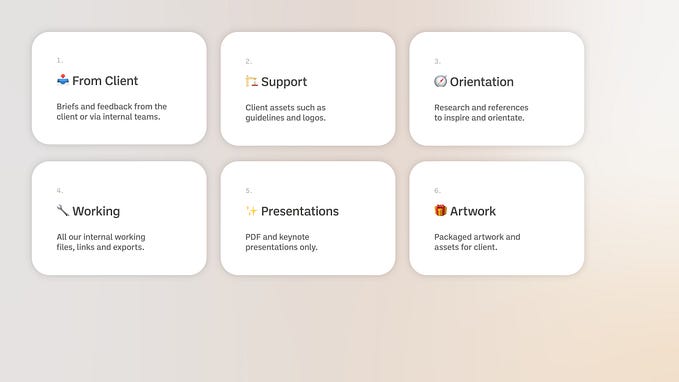The downfall of digital coupons
Something odd occurred in the couponing industry when digital coupons happened.

We still have paper coupons today, but most of them are for grocery shopping, and let’s face it, almost everyone ignores them. But marketers are aware of the benefits they can bring, so they keep using them.

After almost 90 years of paper coupons, every marketer was crazy about the possibilities that online interactive digital coupons could bring them.
In my opinion, that’s where coupons lost their way.
It became possible to track customers, ask them for personal information, request email addresses, as well as likes and follows; and it became a standard to build on top of coupons numerous fan-gates that rendered the whole coupon experience unbearable.
We as marketers lost touch with our consumers as soon as we unknowingly started to strip coupons from their utilitarian and hedonic benefits and started focusing on the trade-offs we were now able to enforce on our customers. That’s when the coupon business started to grow exponentially, but we started to focus on the wrong type of growth. More coupons do not necessarily mean more redemptions and more customers.
“The way I see it, we turned a price discrimination technique into a product and our own products into commodities. In other words, businesses in the pursuit of selling more products in the short turn, shifted their customers attention away from their products and directly to their coupons. ”
There are several examples of how changing coupons’ original purpose can be detrimental to businesses.
Daily Deals
The famous buy-first-coupons that took over the world about a decade ago. Their whole business model was focused on the coupons themselves, not on the products that businesses offered. You can still find these sites and if you have time take a look at their advertising. They offer for example an awesome 50% discount on fancy dinners for two. In my opinion, that’s like saying no matter what you eat and where you’ll eat it; you will only pay half. As Jordan Rohan, an analyst with Stifel Nicolaus said in the article Merchants and Shoppers Sour on Daily Deal Sites written by Stephanie Clifford and Claire Cain Miller published in The New York Times on August 7, 2012. —
“There are no real barriers to entry, but there are fairly significant barriers to success.” One of those barriers is keeping merchants happy. Though small businesses were excited at first about a new way to attract customers in a post-Yellow Pages world, many soon soured on the daily deals. Customers who bought deals overwhelmed the businesses spent the bare minimum and never returned.”
Online Coupons
Everything you buy online might have a coupon in one of these magic coupon code websites and the effort to get the coupon is almost non-existent. A big part of the success of coupons is its hedonic characteristics like exploration and entertainment. In using these services businesses are doing themselves a disservice, because they are turning the whole exploration feeling that consumers enjoy into the hands of an external website that does not necessarily only look after their business interests. The coupon experience is totally in the domain of another company. The conversation is not only happening outside your domain, but it is now no longer about your products but about the other company’s capability of providing your customers with coupons.
“A bad coupon experience is as detrimental for businesses as poorly designed packaging. Remember that, in most cases, coupons will be the first experience they’ll have with your product and your business. Creating a cluttered and multi-functional coupon is telling your customers a lot of negative aspects about doing business with you.”
On an article called In Lean Times, Online Coupons Are Catching On written by Claire Cain Miller published in The New York Times on November 26, 2008; she wrote.
“Coupons had never been a big factor online the way they are offline. This is something new,” said Gian Fulgoni, chairman of comScore. “It’s taken pricing power away from the retailers and given it to the consumers because the consumer is totally up to speed on what the prices are.” Retailers have mixed feelings about this shift. Generally, companies prefer limited discounts, e-mailed to a select group of customers, or sent inside packages with a purchase. When the coupons get wider exposure, retailers lose control, potentially costing them more money than they expected.”
In both cases, you can notice how businesses that have discounts in the form of coupons end up suffering hard consequences. It seems to be impossible for businesses and consumers to collectively win in a coupon-based transaction.
“Inaugurate reasonable policies for accepting coupons only under certain and stated conditions. Raising the standards of the ethical principles and morals involved in cashing coupons is not only good business practice but should have a salutary effect on both employees and customers who should recognize the honorable intentions of all parties concerned.” — T.A. Von der Ache, October 1959.
As soon as I read that quote I realized there was hope for the coupon business. Back in 1962, a book was published by Robert M. Prentice for the Association of National Advertisers, Inc. called “Coupon Promotions — How to Plan, execute and Evaluate retailer-redeemed coupon programs” where a standard on coupons was proposed for the sole purpose of consolidating discrepancies in the coupon business. One of the most important aspects for marketers back then, was to find a way to standardize coupons and their distribution across marketing channels mainly to guarantee all consumers a seamless coupon experience, thereby increasing overall coupon interaction and redemption. Businesses of all industries benefited from this idea because now it didn’t matter if you were a small business or a big one, your coupon would look the same and would offer the same easy-to-claim and easy-to-redeem experience. It was easier back then to think of a solution like this because there weren’t as many marketing channels as there are today.
However, I believe it is possible to create digital coupons with that same seamless interaction across all marketing channels, but we’ve deteriorated digital coupons' reputation so much with all these trade-offs we’ve enforced on our customers, that it will take time and a lot of effort to gain back everyone’s interest on digital coupons. There needs to be a genuine will from all businesses and coupon distributors to reinforce the coupon as a concept with trustworthy mechanisms that make customers feel safe when entering an email address while requesting a coupon, and we need to stop focusing on trade-offs and useless fill-in forms in the middle of the coupon experience so that customers start using coupons with the same eager and determination as back in the day.
Let customers truly focus on a coupon’s utilitarian and hedonic benefits, and steer the conversation away from the coupon itself and on to the fact that they are purchasing your product thanks to your company’s marketing efforts and their loyalty to your brand.
References
Coupon Promotions by Robert M. Prentice for ANA, Inc
Sales Promotion by Scott A. Neslin
In Lean Times, Online Coupons Are Catching On by Claire Cain Miller
Merchants and Shoppers Sour on Daily Deal Sites by Stephanie Clifford and Claire Cain Miller
After taking a look at the downfall of coupons, wouldn’t you think that the best way to counteract this is to do well with our customers and respect their privacy? If you are interested in doing digital coupon campaigns like this, visit https://circusoffers.com









